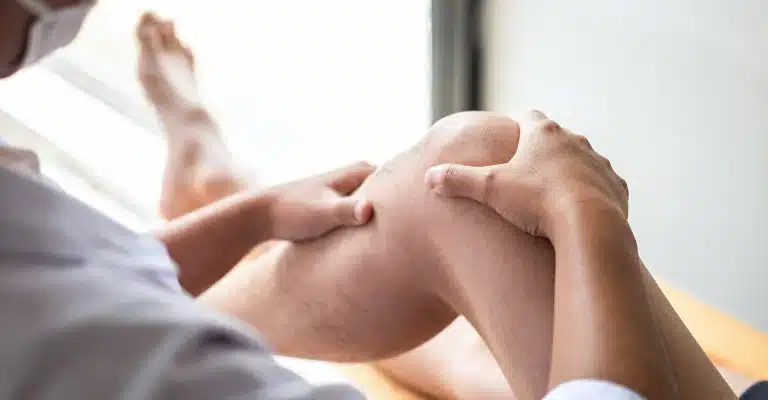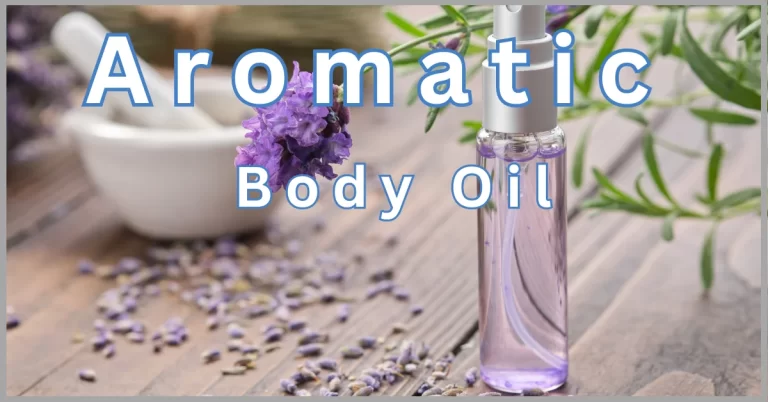Improving Recovery from Total Knee Replacement with Massage for Scar Tissue
Learn how to reduce pain and improve range of motion with knee replacement scar tissue massage. Discover the benefits of this therapeutic technique for post-operative recovery.
Massage can be a helpful way to improve recovery from total knee replacement (TKR) surgery, especially for reducing scar tissue.
Understanding Scar Tissue
Scar tissue is a natural part of healing after an injury or surgery. It is made up of a type of fibrous tissue called collagen. Collagen is a vital protein that helps to hold tissues together. However, scar tissue is not as muscular or elastic as the original tissue that it replaces.
Scar tissue can form in any body part, but it is most common on the skin. It can also develop in muscles, tendons, ligaments, and internal organs.
Three main types of scar tissue:
- Normal scar tissue: This is the most common type of scar tissue. It is flat and pale, and it fades over time.
- Hypertrophic scar: This scar tissue is raised and red or pink. It can be itchy and uncomfortable. Hypertrophic scars often form on the chest, shoulders, and back.
- Keloid scar: This type of scar tissue is also raised and red or pink, but it can grow more significantly than the original wound. Keloid scars can be itchy and painful. They often form on the chest, shoulders, and upper back.

The ways that massage can help to improve recovery from TKR surgery:
- Reduce scar tissue. It can help to break up scar tissue and make it more flexible. This can improve the range of motion and reduce pain.
- Improve circulation. Massage supports to improve blood flow to the area around the scar. It can help deliver nutrients and oxygen to the tissues, speeding up healing.
- Reduce inflammation. It can assist in reducing inflammation and swelling around the scar. It can also help to enhance the range of motion and reduce pain.
- Increase flexibility. It can help to increase the flexibility of the tissues around the scar. It can support to improve the range of motion and reduce stiffness.
Massage can start as soon as the incision is healed, typically about 3-8 weeks after surgery. It is crucial to begin with gentle massage and gradually increase the pressure as the scar tissue softens.
Tips for massaging your scar after TKR surgery:
- Use a light touch first and gradually increase the pressure as the scar tissue softens.
- Massage the spot in all directions, including up and down, side to side, and in circles.
- Pay attention to any areas that feel tender or tight. Spend more time massaging these areas.
- You can utilize a massage oil or lotion to help lubricate the skin.
- Massage for 5-10 minutes at a time, twice a day.
[wps_alert type=”primary”]Talk to your doctor or physical therapist if you have any concerns about massaging your scar. They can provide you with more specific instructions and guidance.[/wps_alert]
Other things you can do to improve recovery from TKR surgery and reduce scar tissue, such as:
- Following your doctor’s instructions for physical therapy exercises
- Using cold compresses to reduce inflammation
- Keeping your knee elevated when you are sitting or lying down
- Eating a healthy diet and getting sufficient rest.
The Benefits of Massage for Scar Tissue
Massage therapy is a non-invasive and drug-free technique that can reduce scar tissue and improve the range of motion after total knee replacement surgery.
- Breaks down scar tissue: It helps to break down the adhesions and fibrous tissue that form in and around the incision site and joint, allowing the tissues to become more pliable and flexible.
- Improves circulation: Massage therapy can improve blood and lymphatic circulation, which helps to remove waste products from the tissues and reduce inflammation, thus promoting faster healing.
- Increases range of motion: It can help stretch and lengthen the muscles and connective tissues surrounding the joint, improving the range of motion and flexibility.
Different types of massage can be used for scar tissue reduction, including:
- Swedish massage involves long, smooth strokes, kneading, and circular movements to promote relaxation and improve circulation.
- Deep tissue massage: This technique uses deep pressure and slow strokes to target the deeper layers of muscles and connective tissues, helping to break up scar tissue and relieve tension.
- Myofascial release: This technique focuses on stretching and releasing the fascia, the connective tissue surrounding and supporting the muscles, reducing adhesions, and improving mobility.
Trigger point therapy involves applying pressure to specific muscle points to release tension and alleviate pain.
Your therapist can help determine the types best suits your specific needs and preferences. Regular massage therapy sessions can effectively manage scar tissue formation and promote healing after total knee replacement surgery. You may also like about Knee Massager review.
Precautions and Risks
Precautions and risks to be aware of when massaging scar tissue:
- Massage should only be started once the scar is fully healed. This typically takes 3-8 weeks after surgery.
- Massage should first be gentle and gradually increase pressure as the scar tissue softens.
- If you experience any pain, stop massaging immediately.
- Massage should not be performed over open wounds or infections.
- People with diabetes or other circulatory problems should be careful when massaging scar tissue.
Risks associated with massaging scar tissue include:
- Infection: If the scar is not fully healed, there is a disease risk.
- Pain: Massage can be painful, especially if the scar tissue is thick and stiff.
- Damage to the scar tissue: If massage is too aggressive, it can damage the scar tissue and make it more noticeable.
Talk to your doctor or physical therapist if you have any concerns about massaging your scar tissue. They can provide you with more specific instructions and guidance.
Tips to minimize the risks of massaging scar tissue:
- Use a lubricant, such as massage oil or lotion, to help reduce friction.
- Massage the scar in all directions, including up and down, side to side, and in circles.
- Pay attention to any areas that feel tender or tight. Spend more time massaging these areas.
- If you experience any pain, stop rubbing immediately.
Exercises and Home Care
- Range of motion exercises involves moving the knee joint through its full range of motion to prevent stiffness and promote healing. Examples include heel slides, knee bends, and leg lifts.
- Strengthening exercises can help rebuild muscle strength and support the knee joint. Examples include wall squats, leg presses, and calf raises.
- Ice therapy: Applying ice to the affected area can help reduce inflammation and pain. Use an ice pack or a bag of frozen peas wrapped in a towel for 10-15 minutes at a time, several times a day.
- Compression therapy: Compression can help reduce swelling and improve circulation. Use a compression wrap or sleeve, but avoid wrapping too tightly.
- Elevation: Elevating the affected leg above heart level can help reduce swelling and improve circulation. Prop your leg up on pillows, or use a recliner chair.
To access additional articles related to ‘Hot Tub Patio‘ or to read more posts related to this topic, please visit the Massage category.
Final Thoughts:
Massage can be a helpful way to decrease scar tissue and improve recovery from total knee replacement surgery. However, it is crucial to start massage only after the scar is fully healed and to be gentle at first. If you experience any pain, stop massaging immediately.
Talk to your doctor or physical therapist if you have any concerns about massaging your scar tissue. They can provide you with more specific instructions and guidance.
Common Queries:
[wps_faq style=”classic” question=”What is scar tissue massage, and how does it work?”]Scar tissue massage is a manual therapy technique that involves applying pressure and manipulation to the affected area to break down adhesions and fibrous tissue. This can help improve the range of motion, reduce pain and inflammation, and promote overall healing.[/wps_faq]
[wps_faq style=”classic” question=”Is scar tissue massage painful?”]Scar tissue massage can cause some discomfort or mild pain, especially in the early stages of recovery. However, the therapist should work within the patient’s comfort level and avoid causing excessive pain or discomfort.[/wps_faq]
[wps_faq style=”classic” question=”When is the best time to start scar tissue massage after total knee replacement surgery?”]It is generally recommended to wait until the incision has fully healed before starting scar tissue massage, which can take several weeks. Patients should consult their healthcare provider or physical therapist to determine the optimal timing for scar tissue massage based on their recovery timeline.[/wps_faq]
[wps_faq style=”classic” question=”Are there any risks or complications associated with scar tissue massage?”]While scar tissue massage is generally considered safe, there are some risks and potential complications to be aware of. These can include bruising, soreness, or increased pain in the affected area. Patients should work with a qualified therapist experienced in working with post-surgery patients and follow their healthcare provider’s recommendations for the timing and intensity of massage therapy.[/wps_faq]
[wps_faq style=”classic” question=”Can scar tissue massage be done at home, or should it be done by a professional therapist?”]While some self-massage techniques can be done at home, working with a professional therapist trained and experienced in scar tissue massage is generally recommended after total knee replacement surgery. They can provide targeted and effective treatment, monitor progress, and guide exercises and home care techniques.[/wps_faq]
[wps_faq style=”classic” question=”How long does it take to see results from scar tissue massage?”]The timeline for seeing results from scar tissue massage can vary depending on the individual patient and the severity of their scar tissue. Some patients may start to see improvements in range of motion and pain reduction after just a few sessions, while others may require more extensive treatment over a more extended period.[/wps_faq]













